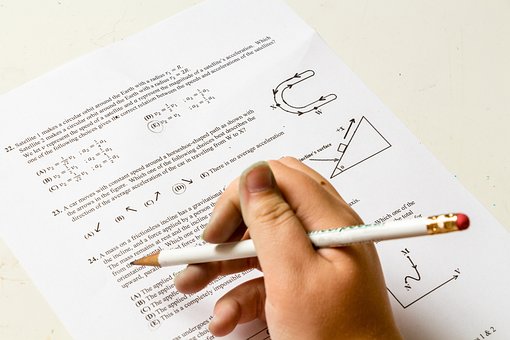 Yesterday, I realized my students read the problems but they don't know how to analyze the meaning of the words in terms of mathematics. My students are learning about complementary, supplementary, adjacent, and vertical angles, and linear pairs.
Yesterday, I realized my students read the problems but they don't know how to analyze the meaning of the words in terms of mathematics. My students are learning about complementary, supplementary, adjacent, and vertical angles, and linear pairs.We defined all the terms, went through the appropriate drawings, discussed each item but when it came time to do the work, they didn't take time to relate the questions to the new material.
So today, I plan to go over the examples in the book but include discussion on taking the vocabulary in the questions and relating it to the new material. For instance, one question asks students to name pairs of adjacent complementary angles. The students tried to answer the question by guessing rather than determining exactly what the question wanted.
We are going to rewrite the question after defining the words. So pairs require two angles or groups of two angles. Adjacent means they have to be next to each other and complementary means the angles add up to 90 degrees. So the question is asking students to find at least two angles that add up to 90 degrees. Then I'll have them look at the diagram to see if there are at least two matching this.
Another question asked if you have two complementary angles and one angle is 32 degrees what is the other angle? We know that the complementary angles add up to 90 degrees, so 32 + X = 90. I'm going to introduce algebra to help them see that algebra can help solve geometric problems.
My students tend to score much lower on language and reading than they do on math but they tend not to do as well when language is involved. Equations yes, language no, so taking time to help them look for meaning in the words, will help them do better on future tests.
From today on, as I work through examples for each section, I plan to model looking at the definitions of mathematical words, relating them to the section's vocabulary, asking myself what they are actually asking. Students too often want to know how to do the assignment without knowing or wanting to look at the nuances of the problem.
This will require students to learn to annotate on the side, just like they do in their regular English class. Annotating is a way for the reader to interact with the text to increase a readers understanding, ability to recall information, while creating a connection. In Math, annotating means looking at the meanings of words, finding information to answer the question. So that is what I'll be teaching students today.
I'll let you know how it goes. Let me know what you think, I'd love to hear. Have a great day.
No comments:
Post a Comment